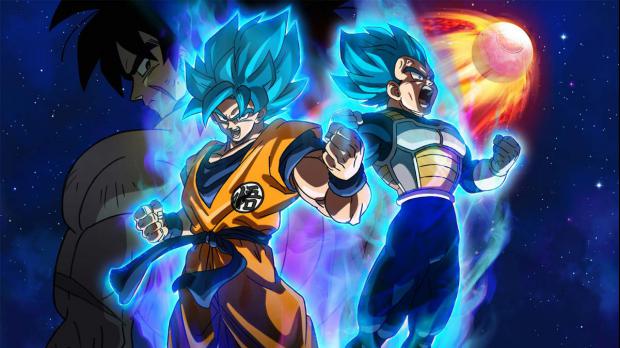The Barcelona Manga Fair was held from 29 October to 1 November 2015. They specifically welcomed big names from the world of Dragon Ball: Tadayoshi Yamamuro, the animation director of Dragon Ball Z, who also spoke on series Dragon Ball Kai, Dragon Ball Super, and the movie Dragon Ball Z Battle of Gods, before heading Dragon Ball Z Resurrection of F. Norihiro Hayashida is an experienced manufacturer in the field of animation. He oversaw both the film The Resurrection of F and the second season of Dragon Ball Kai. Anime-Digital-Network had the chance to sit down with them to discuss the current situation Dragon Ball, the new series of future projects.
Interview Tadayoshi Yamamuro and Norihiro Hayashida
Let’s start with the origin of this new wave Dragon Ball. Are you happy with the reception of Dragon Ball Kai?
Norihiro Hayashida: Absolutely. Kai was incredibly positive for the franchise because it gave us a great starting point for new Dragon Ball productions. When Dragon Ball Kai had peaked, the Resurrection F movie was announced, and the Kai TV audience was the more increased. The new film has been very helpful for the success of Kai. During the first part of Kai, until the end of Cell, we had some sequences 100% redesigned with new visual effects.
But this restoration effort disappears towards the end of the series, during the Buu saga, in favor of another HD restoration project of animation of the original series …
Hayashida: It was ten years ago, the Japanese government banned some animation techniques considered potentially dangerous to the eyes. There was such a technique based on the alternation of black and white colors to add a motion effect on still images: This technique is not authorized and it especially affected the first season of the original series Dragon Ball Z. So what facilitators we did were take the original images and repeat all sequences that could not be used because of this. And some of these sequences more suitable anyway. But that’s why there are some scenes redrawn in the first part of Dragon Ball Kai. Personally, I prefer the second season because it preserves more of the original series. What is certain is that I do not like the combination of digital animation and cels (cells = drawings, hand-painted), the contrast is just too weird for me.
Why have you decided to revive Frieza in the last film?
ADAYOSHI YAMAMURO: It was an idea by Akira Toriyama himself. It was a concert by the Japanese band ‘Maximum the Hormone’ when they started playing the song ‘F’, which deals with Frieza’s background song. There he had the idea of reviving Frieza in the new film, and of course, this song is played in the movie too!
Can we expect a Dragon Ball Z movie The Resurrection of C, since Cell is the villain in the following Dragon Ball?
YAMAMURO : (laughs) As a facilitator I do not like it because Cell Design is really hard to draw. when it is stationary, all right, but when it moves, it’s very hard because of all the tasks on his body. it takes a long time for the draw, and you must calculate every move perfectly checking the result every time.it’s so much work!
What is the future of the Dragon Ball movies?
Hayashida: We will have to wait to see how it goes, but there could be something even bigger coming soon.
With these new Dragon Ball movies, are you trying to attract new fans, or would you rather try to take advantage of the factor “nostalgia” of the original series?
Yamamuro: These new films are intended for two audiences. We want to attract fans of the first original series, but also new fans with the creation of new characters.
In the film DBZ The Resurrection of F, there are still things that are not always explained.
Yamamuro: It does not concern quite 100%, but most of the things the film that remains unexplained are made to be explored later in Dragon Super Ball Saga.
Speaking of Super Dragon Ball: Why the animation and frames have such problems?
Hayashida: The reviews we received were too exaggerated. Someone put a video of a few seconds on the internet, and critics have blended over the entire series. You can not criticize by watching a few sequences. The facilitators responsible for these scenes are beginners who have just started working at this level of the animation industry, which means that their skills are still evolving right now. Anyway, they are good leaders, and I just do not understand why they have been criticized to such an extensive degree.
Do you think the Japanese industry produces animated shows beyond its means?
HAYASHIDA: Yes, it’s a real dilemma. There are both many beginners who arrive in this industry right now, and both a very limited production time. That’s why the quality of the animation is slightly deteriorated. For example, in the United States, there is a lot more control over the delivery of animated production, but things do not work the same way in Japan. In Japan, the post-production time is increasingly reduced to an unsustainable level. The manager barely has time to check the final product. There is even more time to review after all the animation work, and therefore, the quality suffers.
Is there a solution for this?
HAYASHIDA: All that happens to us since the introduction of digital technology in the production of animated. As animation studios use their time in digital production, they believe that the manager will take less time to make corrections. For all animation studios: pre-production takes the same amount of time as before, the time of production has increased, but the post-production time has decreased. If we do not improve this way of working, it will be difficult to improve quality. We want to thank Hayashida and Yamamuro for their exclusive interview with us and hope we asked all the questions by fans.
